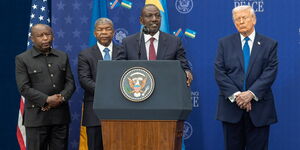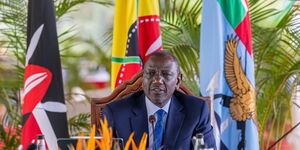Breakdown of Govt Charges to Make Movies and TV Shows in Kenya
The Kenya Film Classification Board (KFCB) on Monday published the requirements and charges needed to make films and stage plays in the country.
KFCB has established a Citizens' Service Delivery Charter that guides the board's service in line with the regulatory mandate stipulated in the Films and Stage Plays Act.
The board offers several services at different fees. Some of the services include insurance of filming licenses, registration of film agents, issuance of film stickers, classification and rating of films, and issuance of classification catalogues among others.
Each applicant must meet various requirements before being issued a license. Below is a breakdown of the requirements, and charges for each applicant depending on the service.
Issuance of Filming Licenses
Applicants making a full-length feature film will be required to fill out the application form and have a detailed synopsis, a screenplay, a shooting schedule, and a list of equipment.
They will be charged a license fee of Ksh15,000 per film and a filming fee of Ksh1,000 per filming day.
Those applicants seeking to make a TV series, web series, or docuseries per season will need a detailed synopsis, screenplay, shooting schedule, and a list of equipment.
These applicants will also pay a license fee of Ksh15,000 per film and a Ksh1,000 filming fee per filming day.
Additionally, Kenyans seeking to make documentaries, short film features, advertisements, corporate videos, or music videos will require a filled application form, a detailed synopsis/script/treatment/storyboard, a shooting schedule, and a list of equipment.
They will pay a license fee of Ksh5,000 per film and a filming fee of Ksh1,000 each day.
Registration of Film Agents
All applicants seeking to register as film agents will need a duly filled application form, company certificate of registration, VAT certificate, professional certificate, and a list of equipment.
Applicants will be charged Ksh12,000 per year.
Classification of Rating of Films
All applicants in this category will be required to have a film in the prescribed format and a duly filled application form.
For posters, trailers, and commercials, each applicant shall be charged Ksh1,000 while for each feature or documentary, each applicant shall pay Ksh100 per minute.
Issuance of Exhibitor's License
All applicants will need a duly filled application form. For video shows and play station joints, the applicant will pay Ksh2,000.
For theatre, all applicants will pay Ksh10,000 per screening.
Other charges paid to KFCB include Ksh10 per sticker, and Ksh3,000 for a distributor's licence. The inspection of exhibitors' or distributor's premises and monitoring of free-to-air TV and radio is free.












